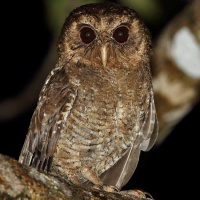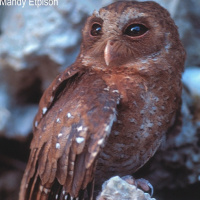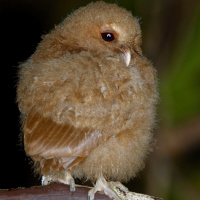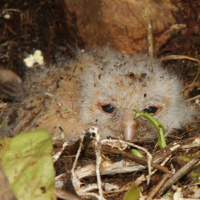Introduction
The Palau Owl is a relatively small owl with no visible ear-tufts. Darker and lighter rufous morphs are known to exist. It was formerly placed in the genus Otus, and called the Palau Scops Owl.
Photo Gallery (4 pictures)
Sound Gallery
Information
Description: Male: The facial disc is pale rufous-buff with narrow, darker, rufous-brown concentric rings. The forehead and
eyebrows are whitish, tinged with rufous-buff, and narrowly barred blackish-brown. The feathers at the base of the upper bill have long, blackish shafts.
The bill itself is dirty whitish. Eyes are brown or orange-yellow.
The crown and upperparts are rufous-brown. Some of the neck feathers are narrowly barred with brown and white. Wings are sandy-rufous with pale
rufous-buff bars. The tail is rufous with indistinct dark brown barring. The throat is whitish-rufous, while the breast is pale rufous, barred with
white and black. The belly is paler rufous. Tarsi and toes are unfeathered and coloured dirty whitish.
Female: Resembles the male described above, but is darker brown above with fine blackish vermiculations. Underparts may be pale or dark rufous
with variable white and brown bars and spots.
Size: Length about 22cm. Wing length 155-163mm. Tail length 78-87mm. No weight data available. Females are on average larger than males.
Habits: The Palau Owl is a nocturnal bird, roosting in mangrove thickets during the day. This owl moves around considerably during the night in search of food, particularly in villages. Calls are made from a perch where it will remain for only a few minutes before moving on.
Voice: The song of the male is a series of clear single notes at intervals of almost 1 second - kwuk kwuk... Notes may vary in length and quality, sometimes softer, sometimes harder. When excited, the intervals become shorter and the call eventually disyllabic, then usually returning to single notes which fade away - kwuk-kwuk... kwuk-kwuk... kwugook kwugook... kwuk kwuk. The song of the female is similar but higher in pitch.
Hunting & Food: The Palau Owl feeds on insects and other arthropods, as well as earthworms.
Breeding: Little known. Pairs remain together throughout the year, but breeding season is February-March. Both male and female will duet during courtship. Nests are in hollow trees or tree holes. Usually 1 egg is laid, average size is 34.3 x 31.7mm.
Habitat: Rainforest and villages in the lowlands. Apparently common around villages on Koror island at night.
Distribution: Most of the larger Palau Islands. Apparently absent from Mecherchar Island.
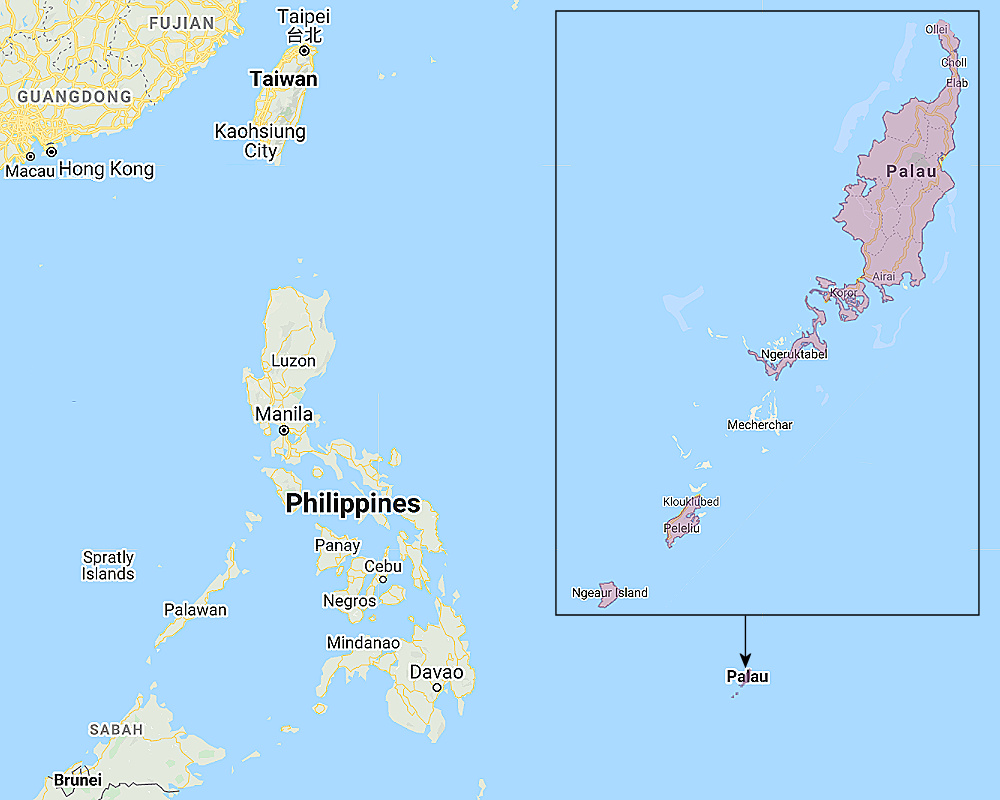
Range of the Palau Owl Pyrroglaux podargina
Status: Locally common.
Original Description: Hartlaub, Gustav, and Finsch, Friedrich Hermann Otto. 1872. Proceedings of the Scientific meetings of the Zoological Society of London for the year 1872 (PZS): Pt. 1, p. 90.

